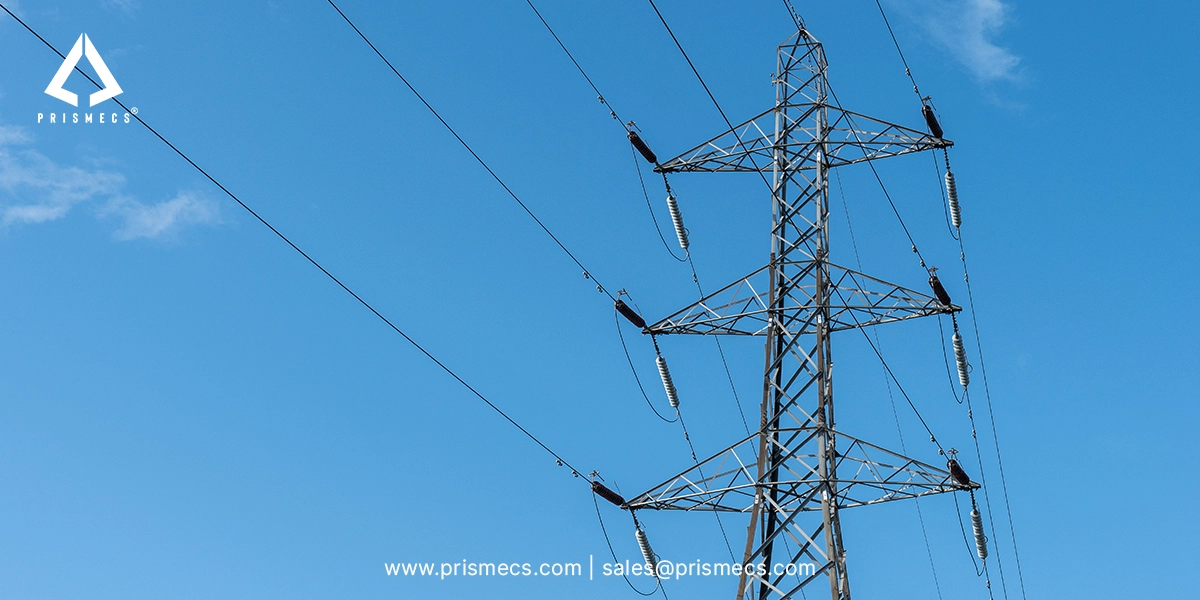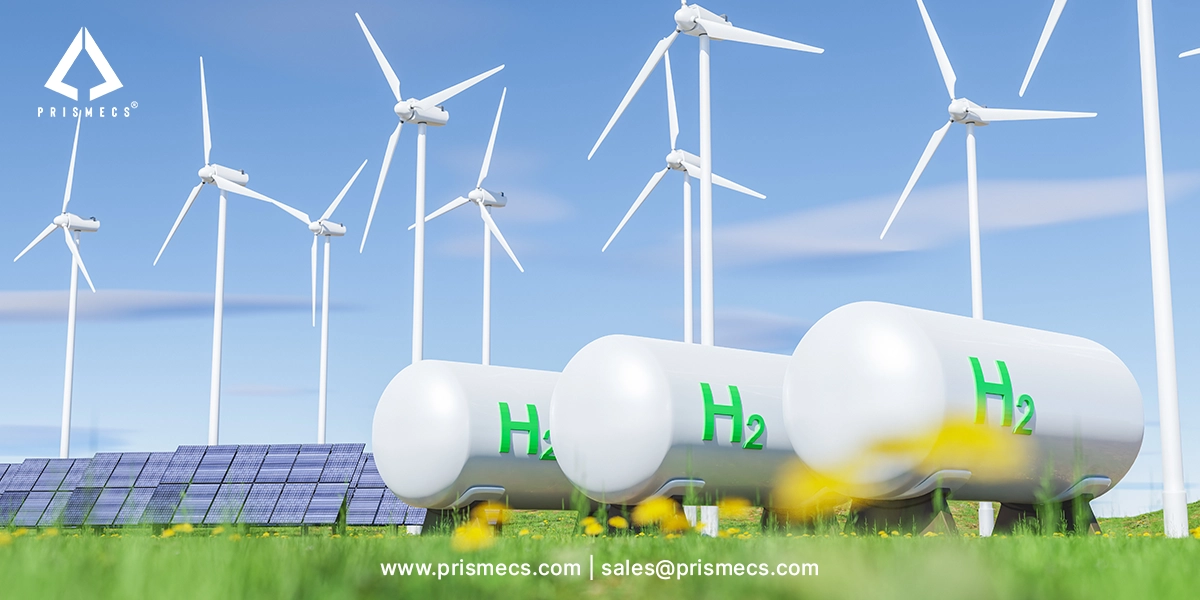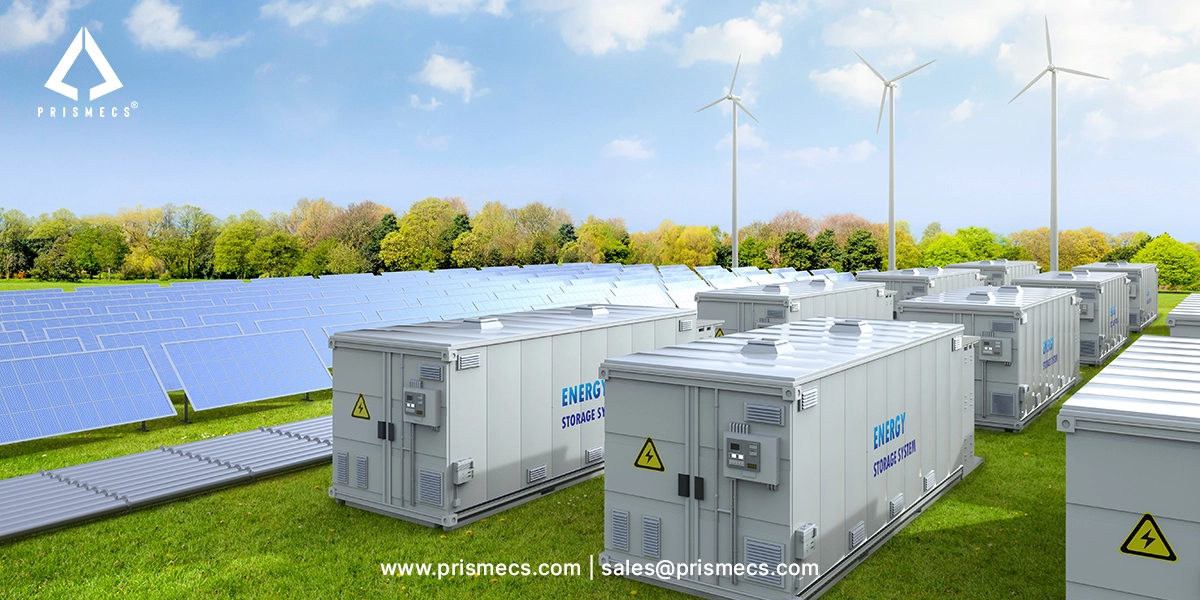
The energy landscape changes fast. Traditional power systems face growing pressure from shifting energy sources. They also face rising energy costs and the global push for sustainable infrastructure. Prismecs stands at the forefront of this transformation. We design and deploy smart grids and distribute energy resources (DER) solutions. These solutions adapt and enhance modern power and energy systems. In this blog, we will walk you through how DER integrates with smart grids. DER integrates power homes and businesses. It supports grid operators and reshapes the energy system.
What Are Distributed Energy Resources (DER)?
Distributed Energy Resources (DER) encompass small-scale units, including solar panels, battery storage, and electric vehicles. These units generate or store energy close to where people use it. These distributed generation assets connect directly to the local distribution network, rather than relying on central power plants. DER often includes renewable energy sources, bringing power efficiency, resilience, and flexibility to energy systems.
Here's how DER integrates key technologies:
- Solar photovoltaic (PV) systems, also known as rooftop solar panels, convert sunlight into electricity. They generate electricity for immediate use or export.
- Battery storage captures surplus energy for later use. It plays a crucial role in balancing renewable energy sources and stabilizing supply.
- Electric vehicles (EVs) serve as mobile energy storage with vehicle-to-grid (V2G) capabilities. They feed power back into the grid when needed.
- Combined Heat and Power (CHP) systems, also known as cogeneration, produce both electricity and heat from a single energy source. They enhance overall energy efficiency.
- Virtual Power Plants (VPPs) aggregate multiple DER, including EVs, solar panels, and battery storage. Grid operators can dispatch this coordinated resource when needed.
Why We Embrace Distributed Energy Resources?
Distributed energy resources (DER) play a vital role in transforming the electric grid. They generate electricity closer to where it is used, improving efficiency and reliability. The benefits of distributed energy resources align with Prismecs' mission to deliver cost-effective, resilient, and sustainable energy products. Let's explore how DER enhances grid stability and enables a cleaner, smarter energy future.
Lower Energy Costs
One of the key benefits of distributed energy resources is their ability to lower energy costs. By generating electricity near demand points, DERs minimize transmission losses and reduce reliance on centralized power plants. Consumers can sell excess energy products, such as solar power, back to the electric grid. This action improves affordability and efficiency.
Improved Power System Resilience
DER significantly enhances the resilience of the electric grid. Local energy systems include solar panels, battery storage, and Combined Heat and Power (CHP). They continue to generate electricity even during grid disruptions. These distributed energy resources ensure that critical facilities and industries remain powered, reinforcing the stability and reliability of modern energy products.
Cost-efficient Infrastructure
Another major benefit of distributed energy resources is their cost efficiency. DER and Virtual Power Plants reduce the need for costly new transmission infrastructure. By optimizing energy flow and lowering congestion, these systems make it more affordable to generate electricity. This efficiency allows utilities and businesses to invest in smarter, more sustainable energy products while maintaining grid reliability.
Environmental Sustainability
DER supports environmental sustainability by utilizing renewable energy products, including solar PV, wind, and biomass. These clean energy systems reduce greenhouse gas emissions and minimize the carbon footprint of the electric grid. By generating electricity locally from renewable sources, DERs contribute to a more sustainable and lower-emission future.
Scalability and Flexibility
Distributed energy resources offer scalability and flexibility unmatched by traditional power systems. You can easily expand capacity by adding more solar panels or battery storage to homes and businesses. Grid operators benefit by dynamically managing load and supply across the electric grid. These flexible energy products empower both consumers and utilities to generate electricity more efficiently and sustainably.
Global Distributed Energy Generation Market Size
Market research projects at the Global Distributed Energy Generation Market will grow at a 13.5% CAGR between 2025 and 2034. Analysts expect the market to reach a value of USD 311 billion in 2025. It is forecasted to grow to USD 1,082 billion by 2034.
Smart Grid Meets Distributed Energy Resources
A smart grid relies on Distributed Energy Resources (DER) for modern performance and efficient electric demand management. It uses real-time data, sensors, and advanced control systems to balance supply and demand. These systems effectively manage interconnected assets within the distribution system. By integrating transmission and distribution networks with digital intelligence, smart grids optimize power flow, minimize losses, and improve reliability. DER enhances smart grids through several mechanisms that ensure a flexible and resilient energy infrastructure.
Virtual Power Plants (VPPs)
Virtual Power Plants (VPPs) combine multiple Distributed Energy Resources, including fuel cells, solar panels, and battery units, into a single controllable resource. This integration allows grid operators to manage electric demand more efficiently during peak hours. VPPs also strengthen the transmission and distribution networks by balancing localized energy generation and consumption. Through this approach, utilities reduce reliance on centralized power plants and enhance grid stability within the distribution system.
Electric Vehicles as Grid Assets
With Vehicle-to-Grid (V2G) technology, electric vehicles act as mobile energy storage systems. They support transmission and distribution networks. These vehicles store excess power during periods of low electric demand and discharge it during periods of peak usage. Acting as dynamic grid resources, EVs can work alongside fuel cell technologies to provide cleaner backup energy. This integration helps stabilize the distribution system, lowers energy costs, and enhances the overall resilience of the smart grid.
Battery Storage Stabilizes Renewables
Battery storage plays a crucial role in balancing intermittent renewable energy sources, such as solar and wind. It maintains stability within both transmission and distribution networks. By storing excess energy and releasing it during periods of high electricity demand, batteries help stabilize the grid. They also complement fuel cell systems, ensuring a continuous energy supply in critical applications. Within the distribution system, battery storage plays a crucial role in providing a quick response. It maintains stable voltage levels and facilitates the integration of renewable energy sources.
Advanced Control Systems and Energy Management
Smart grids integrate Distributed Energy Resources into daily operations using advanced control and automation. These systems monitor electric demand, detect load variations, and optimize energy dispatch within the distribution system. Through coordination between fuel cell technologies, renewable sources, and storage units, control systems ensure efficient transmission and distribution performance. This automation enhances reliability, minimizes downtime, and maximizes the overall efficiency of modern smart grids.
DER Benefits Overview: At a Glance
Benefit of DER | Impact |
Lower energy costs | Users generate or store energy locally and avoid high utility bills |
Enhanced power system resilience | DER continues powering critical operations during outages |
Support for renewable energy | Solar PV and micro generation cut fossil fuel reliance and emissions |
Scalability & Flexibility | Modular addition of solar, batteries, EVs, and CHP adapts to changing needs |
Reduced grid upgrade costs | VPPs and DER coordination reduce infrastructure investment |
Smart Energy Future: DER and Beyond
The energy sector is moving rapidly toward smarter, cleaner systems. DER and smart grid integration drive that growth:
- Virtual Power Plants transform dispersed DER into a unified, dispatchable resource.
- Electric Vehicles morph into mobile energy hubs, aiding in grid balancing and cost smoothing.
- Battery Storage enhances energy storage, turning intermittent solar or wind into a steady supply.
- Combined Heat and Power optimizes energy use by delivering heat and electricity on-site.
- Control Systems tie it all together, monitoring, balancing, and managing DER in real time across the energy system.
DER also pushes grid modernization. As solar PV and EV adoption rise, utilities and grid operators must upgrade infrastructure and adopt advanced control systems. This evolution targets a future where energy flows smartly, sustainably, and efficiently.
DER in Action: Real-World Applications
Distributed Energy Resources (DER) are transforming how electricity flows across the grid. These systems help reduce costs and support efficient heating and cooling. They strengthen the power supply by reducing reliance on long transmission lines. Across industries, DER applications are reshaping the future of clean, reliable energy.
Microgrids and Virtual Power Plants (VPPs)
Modern microgrids integrate solar PV, battery storage, combined heat and power (CHP), and EV chargers into unified systems. These microgrids not only ensure reliable electricity flow during outages but also reduce costs through local energy generation. In VPPs, multiple microgrids interconnect, allowing grid operators to manage power supply more efficiently without relying heavily on transmission lines. Additionally, by balancing heating and cooling demands, microgrids can optimize energy use for both industrial and residential applications.
Energy Management for Grid Operators
Advanced control systems enable grid operators to monitor DER performance, ensuring efficient electricity flow and enhancing power supply reliability. Real-time automation enables operators to stabilize the grid, integrate renewable energy sources, and minimize costs associated with energy loss across transmission lines. These systems also optimize heating and cooling loads within connected facilities, further boosting efficiency.
Combined Heat and Power (CHP)
CHP systems operate in commercial and industrial facilities. They produce both electricity and heat from a single energy source. By reusing waste heat for heating and cooling, these systems significantly reduce costs and improve efficiency. Unlike traditional combustion engines that waste excess energy, CHP units capture it for useful thermal applications. They maintain a steady power supply even when electricity flows from the main grid are limited.
EV Infrastructure with V2G Capabilities
Smart EV chargers enable electric vehicles to act as mobile energy storage, providing flexibility in power supply. With vehicle-to-grid (V2G) technology, vehicles can return stored energy to the grid. This process ensures smooth electricity flow during high-demand periods. This setup helps reduce costs for both consumers and utilities. As people replace combustion engines with electric alternatives, EVs contribute to localized heating and cooling management. They ease pressure on transmission lines and enhance overall grid resilience.
At the Bottom Line
As the global energy landscape evolves, distributed energy resources (DER) enable smarter, cleaner, and resilient power systems. By integrating solar PV, battery storage, electric vehicles, and advanced control systems, DER transforms the traditional grid. It creates a dynamic and flexible network. This network efficiently meets modern energy demands. The future of energy lies in decentralization, digitization, and decarbonization. With DER at its core, that future is already unfolding.
Why Prismecs Champions Distributed Energy Resources
We design energy infrastructure that aligns with the future. It embraces distributed energy resources as key building blocks of a resilient, cost-effective, and sustainable power system. We deploy solar panels, battery storage, EV infrastructure, microgrids with CHP, and virtual power plant solutions. These solutions elevate the energy system. Prismecs proudly leads this transition, delivering tailored DER and smart grid solutions. They lower costs and emissions while strengthening energy reliability and scalability. To avail our services, call us at +1 (888) 774-7632 or email us at sales@prismecs.com.
Tags: Distributed Energy Resources Energy Sources Virtual Power Plants Power System Benefits Of Distributed Energy Resources Renewable Energy Distributed Generation Energy Storage Distributed Energy Resources Der Energy System Combined Heat and Power Energy Management
recent posts

Green Hydrogen
6 minutes read
Green Hydrogen Plant Technology Guide
Discover how a green hydrogen plant works, its key technologies, and its role in clean energy. Explore solutions for scalable, carbon-free hydrogen pr...

EPC Services
7 minutes read
EPC Power: From Design to Delivery of Reliable Energy System
Discover how EPC power solutions streamline design to delivery, ensuring reliable, efficient, and future-ready energy systems in one integrated proces...

Data Centers
12 minutes read
Powered Shell Data Centers | Benefits, Design & Adoption
Discover the benefits, design, and adoption of powered shell data centers. Learn how they boost speed to market, scalability, and energy efficiency.

Distributed Energy Services
9 minutes read
Smart Grid and Distributed Energy Resources
Discover how smart grids and distributed energy resources (DER) work together to create efficient, resilient, and sustainable energy systems for the f...